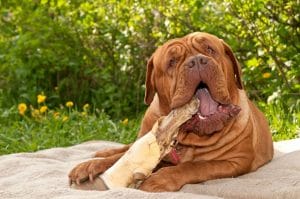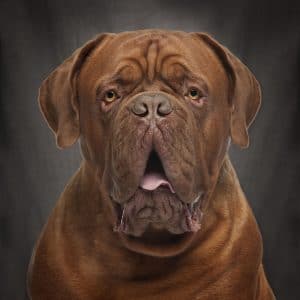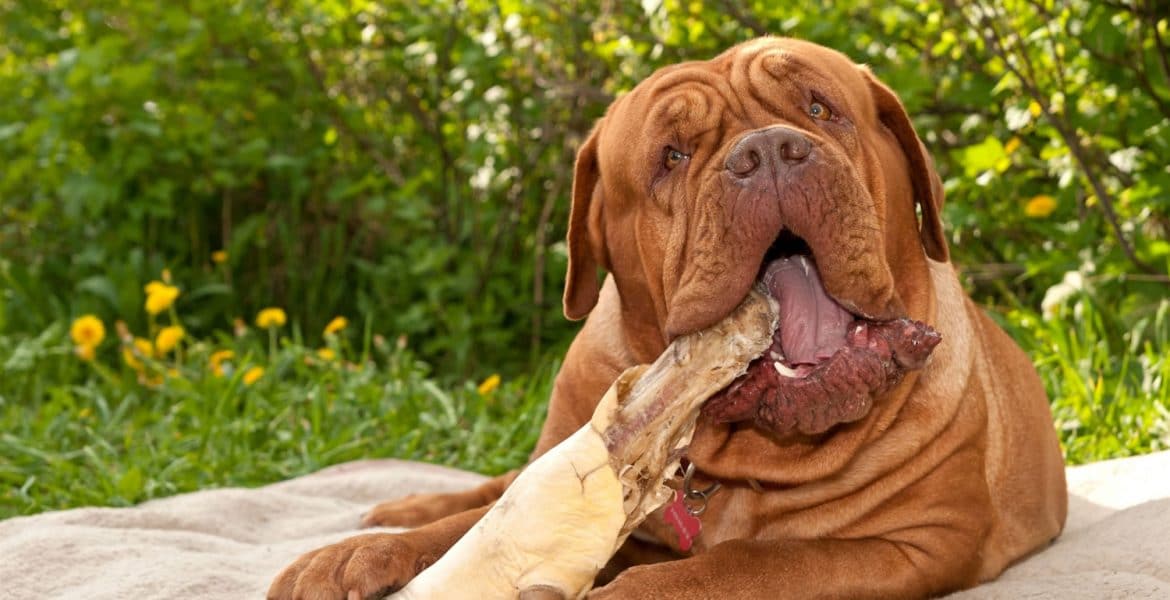 The Dogue de Bordeaux, also known as the French Mastiff, has a long and sometimes unclear history. This breed was known around southern France (particularly the Bordeaux region) as early as the fourteenth century. Its ancestors are not known for sure, but may include the Bullmastiff, the Bulldog and the Greco-Roman Molossoids.
The Dogue de Bordeaux, also known as the French Mastiff, has a long and sometimes unclear history. This breed was known around southern France (particularly the Bordeaux region) as early as the fourteenth century. Its ancestors are not known for sure, but may include the Bullmastiff, the Bulldog and the Greco-Roman Molossoids.
Throughout their long history, Dogues de Bordeaux have been known as great hunters. Their size allowed them to bring down large prey. They were also used for bear and bull baiting before such practices were outlawed. It seems that whenever war broke out, their numbers dwindled. Their strong loyalty to their masters often put them in the way of danger, leading to many rises and falls in their numbers.
In the 1960s, a concentrated effort came about to raise the numbers of this breed. The effort was successful and today these dogs are firmly established around the world. They can be found both in the home and working as herders and guard dogs.
Dogues de Bordeaux have medium sized bodies attached to simply massive heads. The large head is one of the defining characteristics of the breed. In fact, this breed has the largest head (in proportion to the rest of its body) of any breed. The upper lips hang low over the lower jaw, giving the face a rather wrinkly appearance. The circumference of the head is usually between 68 and 75 centimetres.
The breed usually stands between 58 and 75 centimetres and weighs between 54 and 65 kilograms.
 Dogues de Bordeaux have coats that are short and soft. Their skin hangs loosely, giving them a wrinkly look. The coat’s colour ranges from faun to mahogany, with the fur on the muzzle being darker than the rest of the body. Little to no regular grooming is needed for this breed, although some shedding should be expected.
Dogues de Bordeaux have coats that are short and soft. Their skin hangs loosely, giving them a wrinkly look. The coat’s colour ranges from faun to mahogany, with the fur on the muzzle being darker than the rest of the body. Little to no regular grooming is needed for this breed, although some shedding should be expected.
The word most often associated with this breed is ‘loyal’. Loyalty is an attribute that most dogs possess, but few breeds become as attached to their family as a Dogues de Bordeaux. They are very patient and even-tempered, making them quite able to interact well with children.
The flip side of this breed is their fearlessness. If they sense that someone wishes to harm their family, they have no problem confronting the perceived threat. They make excellent watchdogs because of this. Of course, if not properly controlled, this instinct can make for an aggressive, out of control pet. Therefore, socialization from a young age is an absolute must. These dogs are very powerful and, if allowed to exhibit uncontrolled aggression, can do some damage.
In general Dogues de Bordeaux are healthy. They may suffer from hip dysplasia and there have been some cases of epilepsy and heart problems. The average life expectancy for this breed is 10 to 12 years.
Along with its loyalty, this breed shows a high level of intelligence. Unfortunately, they may also be a little stubborn. Therefore, this breed is recommended for trainers who have prior experience. This breed needs an experienced owner who is able to show that he is the boss; otherwise these dogs will have no problem doing whatever they please.


